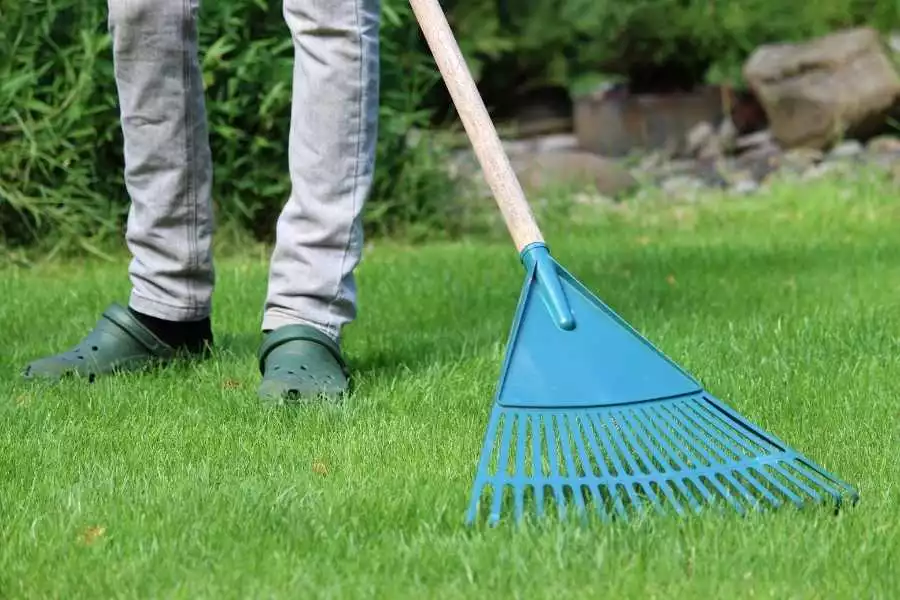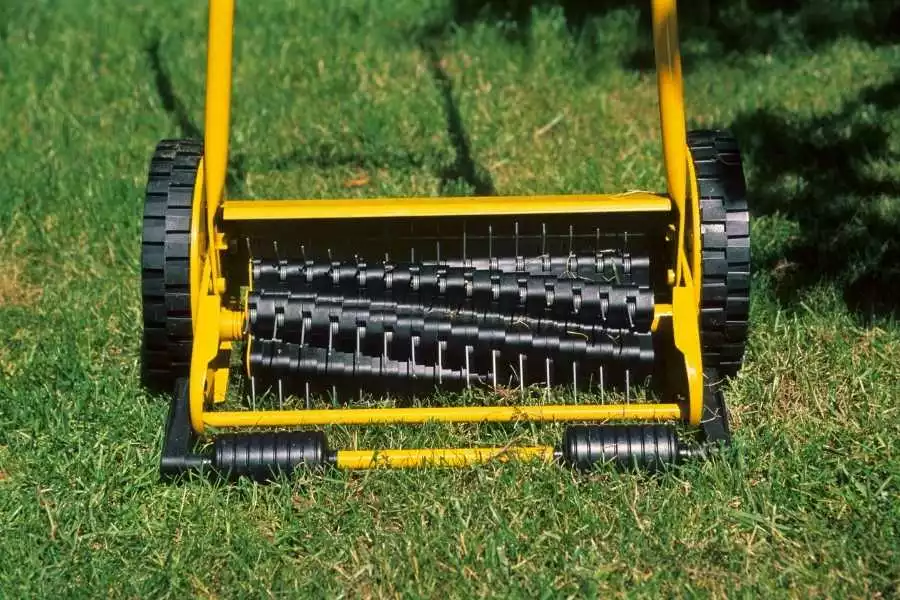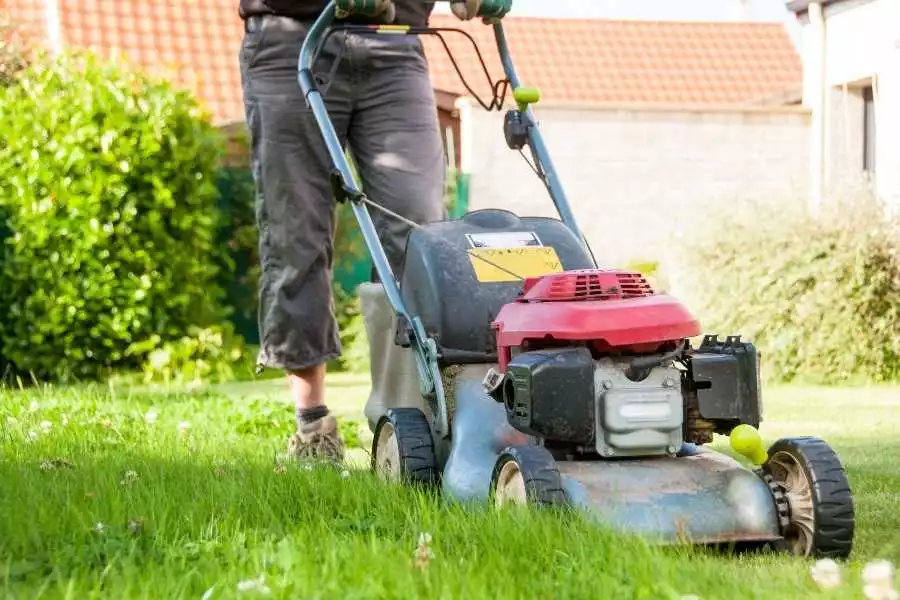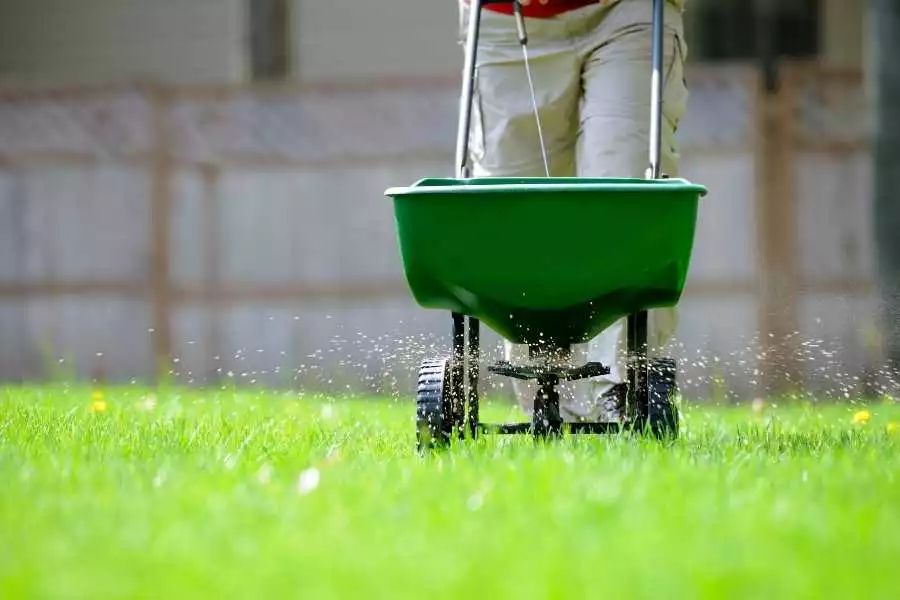Lawn care steps for spring are crucial because lawn grass grows faster than in any other season. This is because it receives an adequate water supply and benefits from spring’s ideal temperature and weather. These elements are helpful for your lawn grass to grow fast and healthier. But some objects on the lawn can be a barrier to your lawn’s optimal growth, like dead grass, stones, debris, or other particles. Therefore, you must take a maintenance task to maintain the lawn’s health and good-looking.
Proper lawn care will help your lawn respond to nature’s spring wake-up call and prepare it for a year of healthy growth. Therefore, it is crucial for the growth and improvement of your lawn. In addition, taking proper steps will prepare your lawn to defend itself from harmful particles, diseases, and drought.
In this article, we will discuss spring-tine lawn care steps and give tips on how to take care of lawns in spring for a desirable embellished lawn.
What is the significance of lawn care?
- Spring lawn care is essential for greenery and a healthy lawn.
- The spring season is ideal for getting your lawn in shape.
- Maintaining your lawn is essential for healthy lawn grass root development.
- It ensures an adequate supply of nutrients, air, and water.
- It protects your lawn by preventing uneven grass growth.
Lawn care steps for spring
You can take numerous steps to make your lawn care tasks easier. All of the tasks are not required for your lawn. You must select the appropriate tasks based on your lawn type, grass type, and situation, as well as the weather conditions in your region. These few steps are outlined below.
Clearing winter waste:
When winter ended, and early spring was about to begin, the leaves of the trees fell on the lawn and covered the lawn area. Therefore, water, Nitrogen, Oxygen, and sunlight can not reach the grassroots due to the falling leaves and small branches of trees on the lawn.
Over the winter, your lawn became full of fallen leaves, dead grass, or other particles that obstruct your lawn’s growth. Removing this debris is one of the most critical steps in setting up a healthy lawn. Getting rid of all the winter waste will bring much-needed light and warmth to your lawn and heal the spring growth.
Spring raking:

In spring, the lawn grass grows faster than in any other season. To ensure deserving growth, you have to remove winter waste. Spring-tine raking removes tall leaves and dead grass that did not survive in winter. So, you can use spring rake tools as a lawn care step. Rake when soil is not soft and muddy. Healthy grass can be pulled up in moist soil.
Remove the thatch:
Thatch is a layer of unwanted old dead grass residues and their roots. Its thickness is more than ½ inches between your grass roots’ topmost layer and your root system. Because of the barrier thatch creates, your grassroots cannot access the moisture, air, and nutrients required to thrive. In addition, your grass becomes more susceptible to diseases if the thatch is thick. Dethatching cool-season grass is best done in the early spring, while warm-season grass is best done in the later spring. You have to use a special dethatching rake to perform the task.
Overseeds thin spots:
To retain the beauty of the lawn, fill bare or thin spots by overseeding. Overseeding of grass varies in different seasons. Late spring is the high time to oversee warm-season grass. For cool-season grass, fall is the ideal time. But spot seeding small areas of the lawn ground in spring, in colder regions, results well. Before overseed and after overseeding apply nitrogen fertilizer considering soil types.
Aerate the soil:

Aerating your lawn should be one significant spring-time lawn maintenance step. Aerating is important as the solution to compacted soil. It depends on the soil type. After winter, the soil is highly compacted due to heavy rainfall. As a result, debris accumulates on the surface, and root growth gets slower in this condition. Aerating helps to get rid of this unhealthy situation and accelerate the root growth of the grass. Therefore, it is essential for a healthy lawn.
Evaluate your soil condition:
The optimal growth of your lawn depends on the condition of the lawn’s soil. The main components of soil are pH, nitrogen, phosphorus, and potassium. The proper level of these elements makes the soil fertile and can influence the desirable growth. But less quantity of any elements hampers the growth of the lawn. So, it’s crucial to test your soil and evaluate the situation. Then, add lime to increase pH and soil enhancer rich in the N, P, or K ingredients you can use to remedy nutrient issues.
Determining the pH value of soil:
There are two ways to find out the pH factor in a soil testing kit:
Use red cabbage water:
Take a pot and fill it with water; make sure you fill it up to about 2 inches. After that, add two teaspoons of ground soil from your lawn to the pot and stir. If the mixture is,
- Cloudy means it’s safe to water your plants
- Pink or reddish means it is acidic.
- Blue or purple means it is in neutral condition.
Use baking soda and white vinegar:
Collect soil samples from different parts of the lawn than from specific parts. To test the soil’s pH levels, add half a cup of water to the soil mixture and mix it properly. Then, add 8 tablespoons of baking soda and watch the reaction.
- If it bubbles, the soil is alkaline
- If there is no fizzing, the soil is not acidic.
Be patient:
After you have completed your main lawn care steps. You should give your lawn time to recover. It can take weeks to respond. However, your lawn will begin flourishing when the days and the soil get warmer.
Spring-time mowing:

When the lawn’s ground requires cutting, then you can start mowing. Cut the grass at the proper height considering your grass type but avoid mowing too low. Lawn mowing ensures sunlight reaches the soil and stimulates seeds to germinate.
Fertilize:

Another crucial maintenance task for a strong and expanding lawn is fertilizing it. When you apply various herbicides to your lawn, you can avoid them. A different slow-release fertilizer, particularly one high in nitrogen, is best for your company if you haven’t used herbicide. The quantity of fertilizer that is specifically required was determined after completing your soil test. Aiming for the NPK ratio, choose the appropriate fertilizer dosage. In plants, nitrogen promotes growth, phosphorus fosters the development of roots, and potassium encourages flowering.
Mower maintenance:
Proper maintenance of your mower is essential before and after the Spring season. Nothing is more complicated than trying to start the lawn mower in the summer. Before you begin mowing tasks in the spring, it is essential to sharpen your mower blades or replace them if necessary. This gives you a fine cut of your lawn grass. You must sharpen or replace the blades following the Spring season to prepare for the upcoming Summer season’s work. It gives you the mower durability. You must replace the spark plug, fuel, and filter before adding fuel to the tank.
Consider these additional tips for caring for your lawn in the spring:
- Fertilizing impact on lawn health. Specially old-fashioned composting make your soil healthy. You can easily make this natural fertilizer by recycling the winter waste in a compost bin.
- It is essential to identify foot traffic for those crucial couple of weeks. Children or animals will be harmful to your lawn in this initial period. You better set a small perimeter fence around your lawn to stop unwanted foot traffic.
- Spring irrigation depends on the regional environment. Increase irrigation when the temperature is high. Don’t try to green up your lawn by watering. Irrigate when rains are scarce, and grass shows signs of dehydration.
When to start lawn care in spring?
Depending on the weather in your area, you should perform lawn care tasks at specific times. You should choose the proper time to start-up lawn care in spring. We have all heard the phrase “the early birds get the worm.” But the philosophy of that phrase is not always similar to how you take care of your lawn in spring. Because if you take any caring lawn steps too early in the spring, it may damage your lawn. It is unnecessary to wait until the first day of spring to apply your lawn care steps. Indeed, March and April are the best time to start lawn care. February can also be a good time, especially in warmer climates.
Consider these signs as the best time to start spring lawn care:
- Grass and soil in your lawn should be thoroughly compacted.
- Lawn grass should be growing faster than before.
- The average temperature should be above 40°F; the air and soil get warmer at this temperature. Plants begin to rise and grow at optimal from their winter rest.
- There should be no muddy areas around your lawn ground.
Conclusion:
Spring is the best time to give your lawn an optimal shape and prepare it for the upcoming summer. In early spring, the grassroots search for enough water and nutrients as the growing season begins. It is an essential task for you to take the necessary maintenance steps. You should choose the proper time for doing this task. But avoid using herbicides and removing grass clippings. Grass clippings contain nutrients that your lawn grass needs. If you are interested in tips for your spring-tine lawn care, follow the information above.



